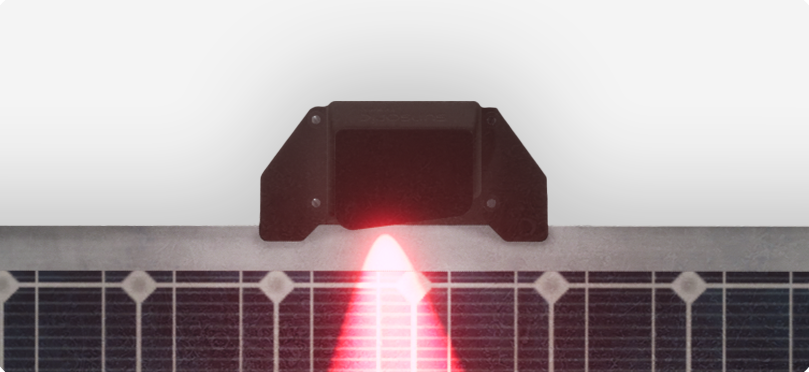From pv magazine Germany
Germany-based Sun-X has secured a patent from the European Patent Office for a sensor that detects soiling levels on PV modules.
The Sunsoric sensor uses a light source that shines over the PV module's surface. Dust and dirt particles on the glass reflect light differently compared to a clean pane, and a receiver diode captures this difference for calculation.
According to Sun-X, the sensor’s algorithm can assess yield loss due to soiling with 1% accuracy. The system adjusts for contamination on the light source and receiver, and this reliability has been confirmed by an unspecified Fraunhofer Institute.
This information is processed via a cloud, incorporating system design and weather data to determine the optimal cleaning time. Sun-X also offers the “sunbotics” cleaning robot for this purpose.
“We have been working on Sunsoric for over three years – always with the aim of determining precise contamination data,” said Pascal Liebold, founder and managing director of Sun-X. “This is the most important factor in calculating the ideal cleaning time. The patent is a huge milestone and will help us to continue to grow and build on our technological lead.”
This content is protected by copyright and may not be reused. If you want to cooperate with us and would like to reuse some of our content, please contact: editors@pv-magazine.com.




By submitting this form you agree to pv magazine using your data for the purposes of publishing your comment.
Your personal data will only be disclosed or otherwise transmitted to third parties for the purposes of spam filtering or if this is necessary for technical maintenance of the website. Any other transfer to third parties will not take place unless this is justified on the basis of applicable data protection regulations or if pv magazine is legally obliged to do so.
You may revoke this consent at any time with effect for the future, in which case your personal data will be deleted immediately. Otherwise, your data will be deleted if pv magazine has processed your request or the purpose of data storage is fulfilled.
Further information on data privacy can be found in our Data Protection Policy.